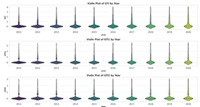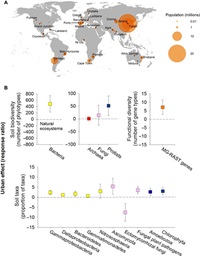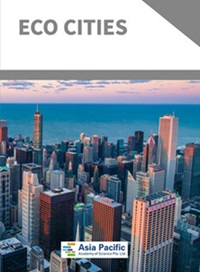

Asia Pacific Academy of Science Pte. Ltd. (APACSCI) specializes in international journal publishing. APACSCI adopts the open access publishing model and provides an important communication bridge for academic groups whose interest fields include engineering, technology, medicine, computer, mathematics, agriculture and forestry, and environment.


Theoretical research on urban spatial structure from the perspective of ecology
Vol 3, Issue 1, 2022
VIEWS - 73 (Abstract)
Abstract
Since ancient times, exploring a reasonable relationship between urban space and nature has been the tireless pursuit of mankind. Since the 21st century, ecological thought has been deeply rooted in the hearts of the people. Today, when the ecological city is gradually recognized by people as the ideal development model of the city, emphasizing the urban spatial model integrated with nature and building a scientific and reasonable urban spatial structure system has gradually become the research hotspot of urban scholars and builders at home and abroad. From the theoretical basis of urban spatial structure research from the perspective of ecology, the origin of academic thought has a long history, but it lacks a systematic established model, so it is very necessary to summarize it.
Keywords
Full Text:
PDFReferences
1. Li X. Cultural geographical perspective of Chinese ancient Feng Shui model. Human geography 2001; (6): 64–68.
2. He M. Research on planning and control of ecological space system in mega cities. Beijing: China Construction Industry Press; 2010. p. 31–32.
3. Howard E. Tomorrow’s garden city. Jin J (translator). Beijing: Information Institute of China Academy of Urban Planning and Design; 1987: 23–30.
4. Green P. Urban geography. Professional Committee of Urban Geography (translator). Beijing: Commercial Press; 2011: 56–88.
5. Geddes. Evolving cities. Li H (translator). Beijing: Construction Industry Press; 2012. p. 45–49.
6. Sarinen. City: Its development, decline and future. Gu Q (translator). Beijing: China Construction Industry Press; 1986. p. 170–178.
7. Corbusier. Tomorrow’s city. Li H (translator). Beijing: China Construction Industry Press; 2009: 27–32.
8. Peter C. Future American metropolis. Guo L (translator). Beijing: China Construction Industry Press; 2009. p. 19–22.
9. Ian Lennox M. Design combines nature. Huang J (translator). Tianjin: Tianjin University Press; 2006. p. 66–76.
10. Register R. Ecocity: Berkeley. Atlantic, USA: North Atlantic Books; 1987. p. 57–135.
11. Ma S, Wang R. Study on complex ecosystem and sustainable development. Beijing: Science Press; 1988. p. 12–26.
12. Fu L. Qian’s thought of landscape city and its research. Journal of Xi’an Jiaotong University (Social Science Edition) 2005; (3): 65–75.
13. Huang G, Chen Y. Study on the concept of eco city and its planning and design method. Urban Planning 1997; (6): 17–20
14. Shen Q. Study on the basic principles of ecological urban spatial structure. China Population, Resources and Environment 2004; (14): 6–11.
15. Yao S, Chen S, Fang G. Some ideas on the construction and spatial layout of modern ecological city. Planners 2004; (1): 79–81.
16. Guo R, Gu C. Optimal combination model of ecological city spatial structure and its application. Geographical Research 2004; (5): 292–300.
17. Ye Y, Zhang H, Zhou C. Review on the research of “ecological orientation” urban spatial structure. Urban Planning 2005; (5): 69–74
18. Qiu B. Eco city makes life better. Urban Development Research 2010; (2): 1–15.
19. Qiu B. The only way of Urban Ecological Transformation—Reconstruction of microcirculation. Urban Observation 2012; (6): 5–
20.
21. Yu K, Li D, Liu H. Anti programming approach Beijing: China Construction Industry Pressl; 2005. p. 11–26.
Refbacks
- There are currently no refbacks.
Copyright (c) 2022 Xiaofeng Dong, Luojia Wang
License URL: https://creativecommons.org/licenses/by/4.0

Prof. Ali Jahani
Research Center of Environment and Sustainable Development, Iran
 .
. 

 .
.